My shopping cart
Your cart is currently empty.
Continue ShoppingWhen choosing between pre-hung and slab doors, it’s crucial to understand the key differences to make an informed decision. This comparison guide will provide a pre hung doors vs slab doors comparison and tips to choose, highlighting their pros, cons, and ideal usage scenarios. Whether you’re replacing an existing door or starting a new construction project, we’ll provide tips to help you select the best option for your needs.
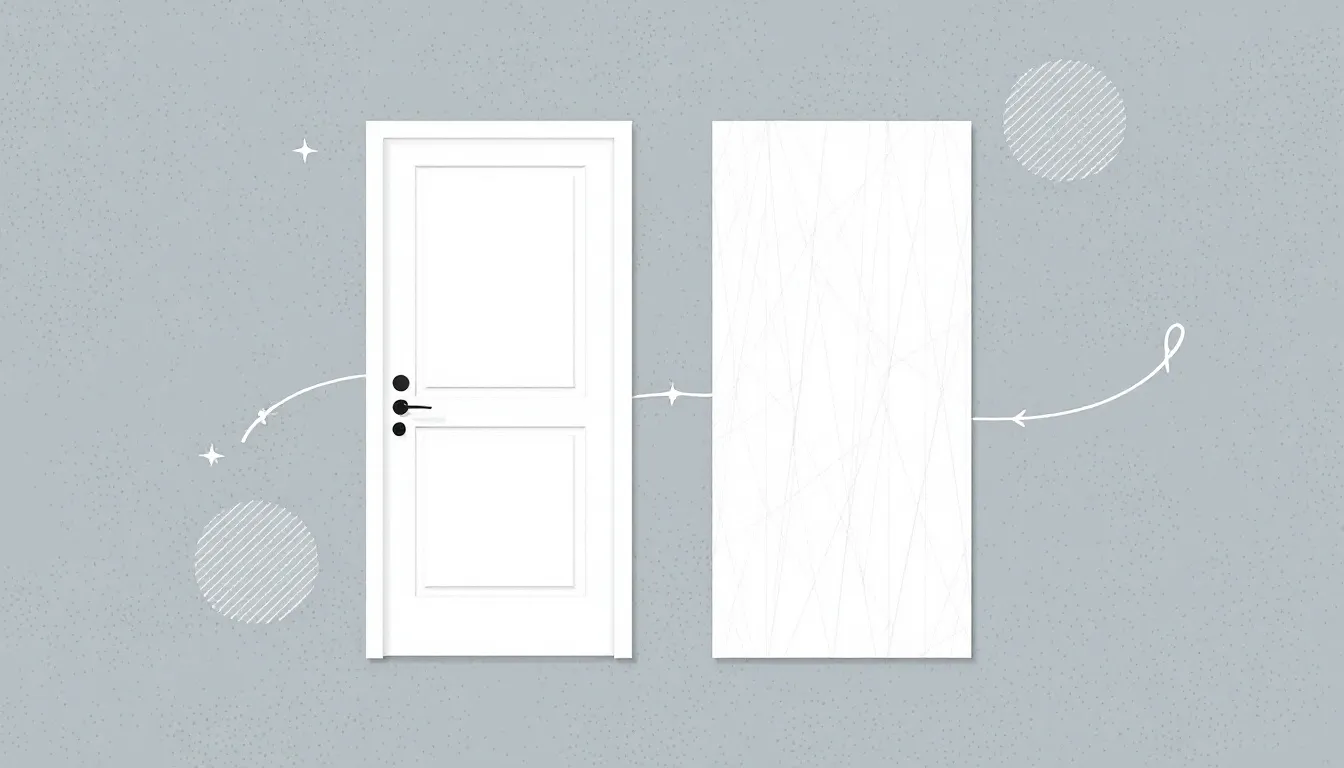
Pre-hung doors are the ultimate in user-friendly installations. They arrive as an all-encompassing set, composed of a door slab secured within a frame and connected by hinges—ideal for many homeowners seeking ease during setup. The pre-mounted nature of these pre-hung door assemblies greatly eases the installation process by eliminating the need to construct a new frame or meticulously adjust hinge placements.
Among their notable advantages is their weather-tight construction, which makes them especially appropriate for use as exterior doors where maintaining energy efficiency and superior insulation is crucial. These ready-to-install units are crafted to seamlessly integrate into an existing doorway opening, ensuring that they ward off drafts and moisture effectively. Additionally, pre-hung doors may require additional features to enhance their functionality or accommodate specific installation needs, making them flexible and customizable for different applications.
For individuals embarking on home remodeling projects or building from scratch, pre-hung doors represent a stress-free alternative. They come tailored to fit inside a three-sided doorframe, which simplifies installation markedly. Pre-hung doors are designed to fit into a prepared doorway, emphasizing that this type of installation requires an existing frame for optimal fit and functionality. One must consider their substantial heft—that can add complexity in handling and transportation matters. Given their straightforward installation coupled with improved energy-saving attributes, it’s clear why so many choose pre-hung options when selecting doors for various endeavors.
A pre-hung door is a type of door that comes with a frame, hinges, and sometimes even the lockset, making it a convenient and self-contained unit. The door is already attached to the frame, ensuring a perfect fit and alignment. Pre-hung doors are often used in new construction projects or when the existing door frame is damaged or outdated. They are also a popular choice for exterior doors due to their weather-tight seal and improved energy efficiency.
Pre-hung doors simplify the installation process significantly. Since the door is already mounted on the frame, you don’t need to worry about aligning the hinges or ensuring the door fits perfectly within the frame. This makes them an excellent choice for those who may not have extensive DIY experience. Additionally, the weather-tight construction of pre-hung doors makes them ideal for exterior applications, providing better insulation and energy efficiency, which can help reduce heating and cooling costs.
In summary, pre-hung doors offer a complete package that includes the door, frame, and hinges, making them a convenient option for new construction projects or when replacing an old, damaged frame. Their ease of installation and energy-efficient properties make them a popular choice for both interior and exterior applications.
Slab doors offer versatility and the opportunity for a tailored approach. In contrast to pre-hung options, a slab door comes as just the door itself without any accompanying frame or hardware. This grants you the autonomy to select your own hinges, frame, and additional hardware for an installation that reflects personal preference.
One of the notable benefits of opting for slab doors is their affordability. Since they come without extra materials such as frames or built-in hardware, they tend to be more cost-effective than pre-hung doors, making them suitable for projects with tight budgets. Repurposing existing door frames when fitting new slab doors can lead to even more financial savings.
Suited particularly well to interior renovations where current door frames are intact and serviceable, slab doors can be adapted to match distinct architectural designs while being relatively easy during transportation due to their less cumbersome nature compared with complete hung units. Nevertheless, the precision required in installing a slab door should not be underestimated—it demands accurate measurements and careful handling so that it aligns perfectly within an already established frame. When you install a slab door, you may face challenges such as ensuring the door matches the existing configuration and potentially building a new frame, which can be complex and time-consuming. For those lacking experience, professional installation is recommended to avoid potential DIY difficulties.
A slab door, on the other hand, is a basic door without a frame, hinges, or hardware. It is simply the door itself, which can be purchased with or without a pre-cut hole for the doorknob. Slab doors offer greater design flexibility and are often used in situations where the existing door frame is still in good condition. They are also a cost-effective option for door installation, as they do not include the additional materials and labor required for a pre-hung door.
Slab doors provide homeowners with the opportunity to customize their door installation to match their specific needs and preferences. Since they come without a frame, you have the freedom to choose your own hinges, lockset, and other hardware, allowing for a more personalized touch. This makes slab doors particularly appealing for interior renovations where the existing door frames are still in good condition and do not need to be replaced.
Moreover, slab doors are generally more affordable than pre-hung doors, making them a budget-friendly choice for those looking to update their home without incurring significant costs. However, it’s important to note that installing a slab door requires precise measurements and careful alignment to ensure a proper fit within the existing frame.
In conclusion, slab doors offer a versatile and cost-effective solution for door installation, providing greater design flexibility and customization options. They are ideal for projects where the existing door frame is in good condition and can be reused, allowing for a more personalized and budget-friendly approach to home improvement.
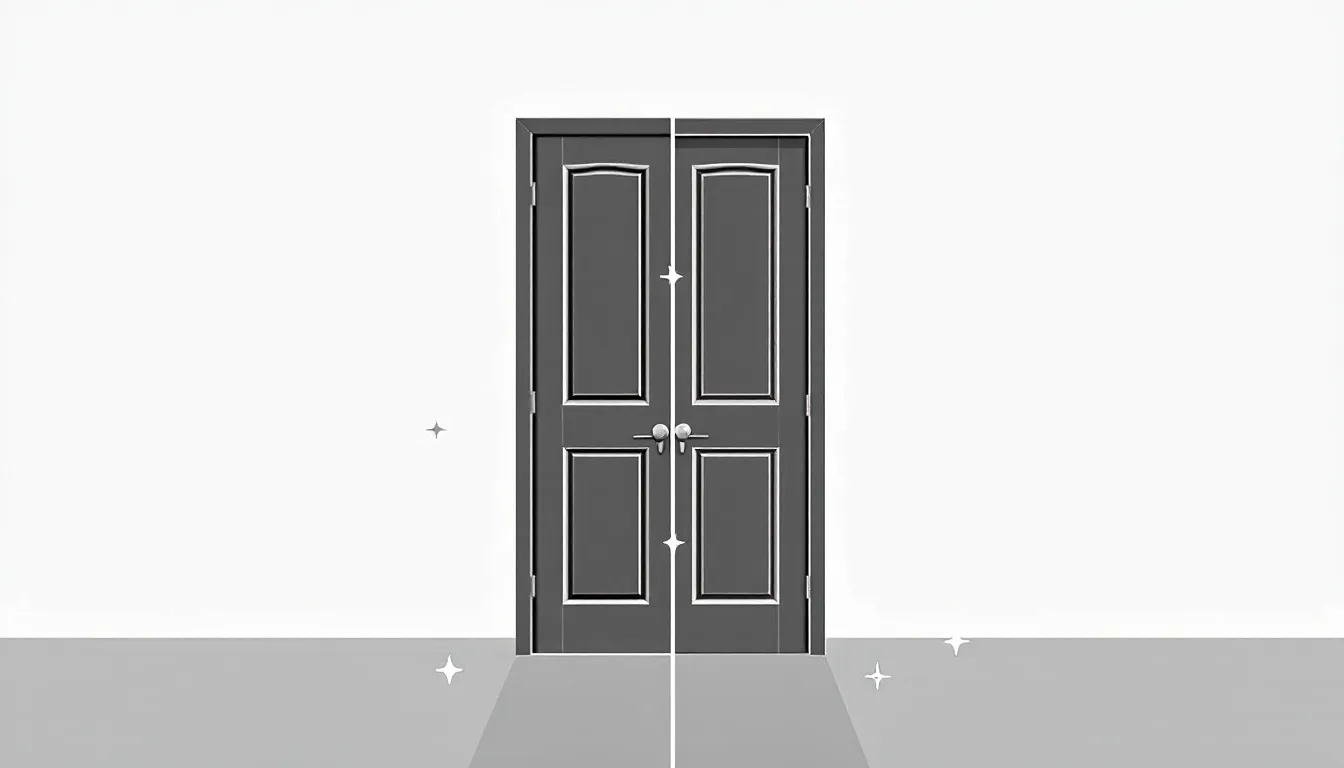
In assessing the distinctions between pre-hung and slab doors, it’s important to note that a pre-hung door is essentially a complete set comprising both the door slab and its frame. This configuration greatly simplifies and accelerates the installation process. Conversely, installing a slab door requires greater expertise as it involves precisely fitting the new door into an existing framework. Pre-hung units, while convenient, are heavier and can be more challenging to manage due to their bulk and the need for precise fitting within door openings.
Cost considerations are also paramount when deciding between these two types of doors. Slab doors may appear more budget-friendly at first glance. Additional expenses for necessary hardware and tools can increase overall costs. Pre-hung options tend to have higher initial prices but come with all inclusive components like frames and hardware, which could lead to savings in time and effort—benefits particularly valuable for those lacking extensive DIY experience.
Considering customization potentiality, slab doors present wider opportunities allowing alterations that suit specific structural openings or desired design aesthetics. Meanwhile, their pre-hung counterparts typically offer less flexibility due to their larger size—a factor making them harder to transport and maneuver during handling processes. Achieving a smooth swing and tight fit in slab doors can be complex, affecting door functionality. Henceforth, if one aims merely at replacing an isolated door while maintaining an intact frame conditionally sound in structure, then opting for a slab type might represent a judicious decision based on practicality grounds.
Pre-hung doors offer a number of benefits that include a space-saving solution:
Accurate measurements of the door opening are crucial for ensuring a proper fit and smooth installation of pre-hung doors.
There are certain downsides associated with pre-hung doors. These typically cost more owing to extra materials required in their construction. Their sizeable nature can make them cumbersome, usually necessitating at least two people for transportation as well as during the hanging and fixing stages.
Pre-hung doors come with a frame pre cut, simplifying the installation process by eliminating the need for building a frame and pre-cutting elements.
Despite these potential obstacles, where door frames may be damaged or not perfectly aligned after being pre-cut, pre-hung doors prove particularly beneficial since they provide a comprehensive solution ready for integration.
Opting for slab doors is a cost-efficient approach to enhancing the interior of your home, appealing to numerous homeowners. These door slabs provide significantly greater design flexibility than other options, permitting custom shapes and finishes that align seamlessly with various architectural aesthetics. They are particularly fitting for updating an interior door when you have existing door frames that remain in satisfactory condition. Slab doors also contribute positively to the ambiance of a room. Slab doors require more manual adjustments for door hardware.
Conversely, the installation of slab doors demands skill and precision, which can pose difficulties for those who are new to such tasks. It necessitates accurate measurement and careful handling to make certain that the slab fits impeccably within its designated frame. It is easier to install a slab door when it is the same size as the old door. Despite these potential obstacles during installation, their adaptability and affordability continue to render them favorable choices in many remodeling endeavors.
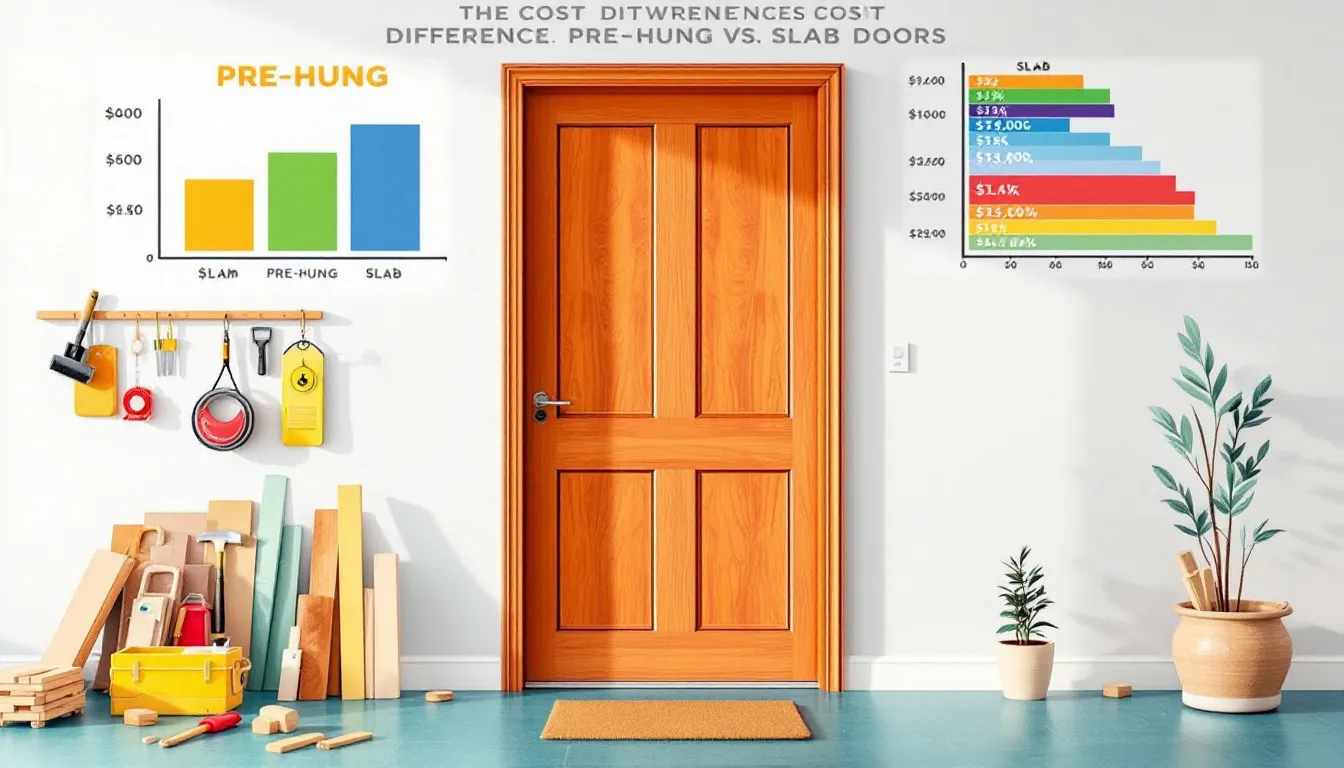
The price of doors can vary widely, but typically slab doors are more affordable than their pre-hung counterparts. The cost for a slab door is commonly between $60 and $300, while pre-hung varieties tend to fall within the range of $125 to $400, not including the costs associated with installation. This disparity in pricing mainly stems from the extra materials and labor required during the production of pre-hung doors.
Despite being less costly at first glance, installing a slab door might necessitate purchasing additional hardware and tools which could increase your total expenditure. In contrast, pre-hung doors include everything needed for installation in one comprehensive package, which may streamline your efforts although they command a higher initial cost due to this added convenience.
In determining whether hung or slab doors suit you best, it’s crucial to evaluate both your financial limits and the state of any existing door frames you have. Should finances be tight and repurposing current hardware is an option, opting for a slab door may be more financially prudent. Conversely, if what you seek is an all-in-one solution despite its premium expense for ease of installation, then investing in a pre-hung door would likely serve as advantageous.
When comparing these options, it's essential to consider the total cost, including both the frame and door hardware, to ensure an accurate assessment of expenses. Factoring in the total cost will help you make a more informed decision that aligns with your budget.
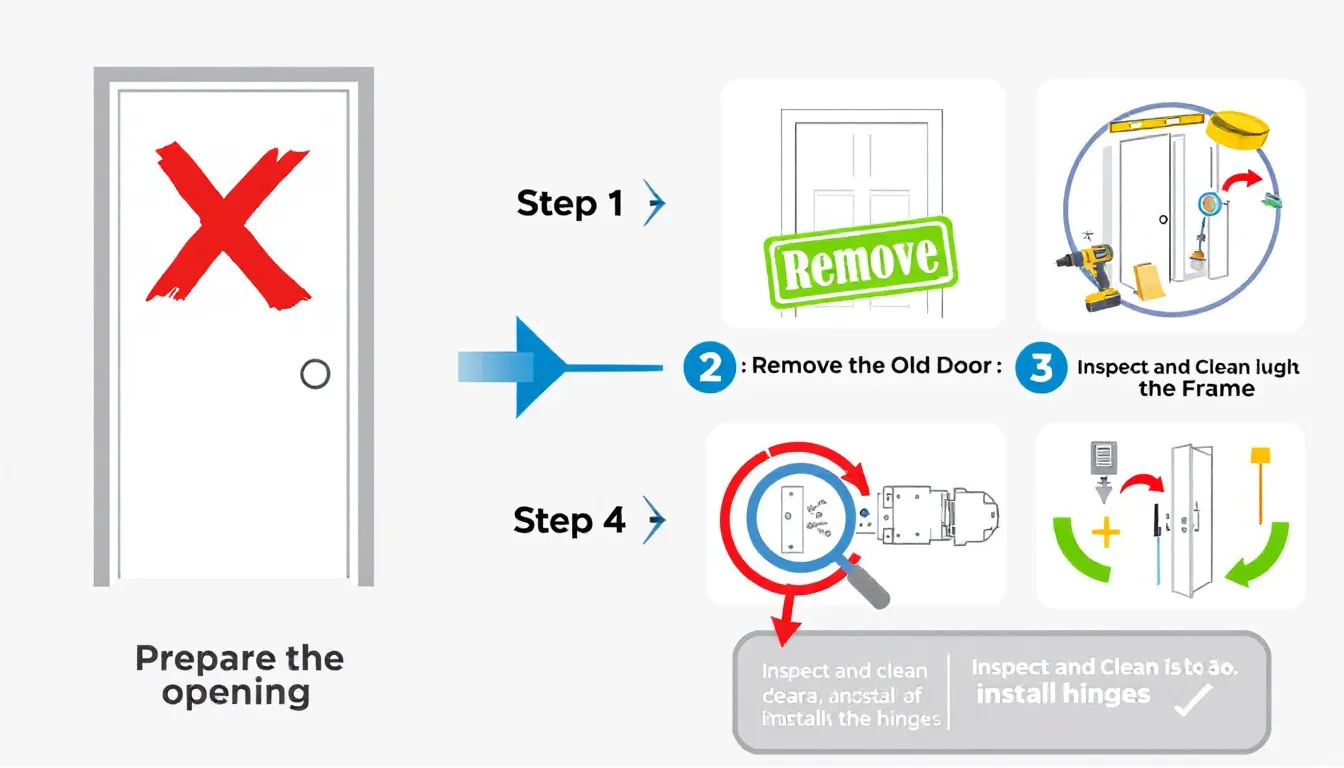
The installation of pre-hung doors is a relatively simple task, often favored by those who enjoy do-it-yourself projects. The initial step involves verifying that the dimensions of the rough opening align with those of the pre-hung door unit. Ensuring that this space is level, square, and straight is vital to prevent issues during the placement process.
After ensuring proper preparation of the opening, you can position your pre-hung door in place. It’s essential to stabilize it with shims for alignment and support so that it functions without any hindrance or jamming issues. Adding caulk around the frame not only protects against moisture intrusion, but also bolsters energy efficiency. Pre-hung doors are particularly advantageous when dealing with exterior walls, as they come ready-made to be weather-tight, simplifying the installation process.
Should one decide on professional assistance for installing these hung doors, skilled technicians can guarantee correct installment and usability. Keeping an eye on hardware like screws and hinges will contribute to sustained operation over time. Despite their heftiness, many homeowners find installing pre-hung doors favorable due to their convenience as a comprehensive solution encompassing both door and frame ready for setup.
The task of installing slab doors necessitates greater precision and expertise than the installation of pre-hung doors. Commencing with the preparation of necessary tools like a drill, circular saw, and combination square is essential. Dry fitting the new slab door into its designated frame before permanently securing it helps to guarantee that adjustments can be made for optimal leveling and alignment. Hanging a door correctly requires skill and patience, especially when dealing with variations in door size or when installing vintage or recycled doors.
Adapting an old door to fit within an existing frame may require additional steps such as planing, sanding, or straightening during installation—this is particularly true for vintage or reclaimed doors which might not be perfectly shaped due to warping or other damage. This extra work serves to ensure a precise fit in order for your newly installed slab door to integrate smoothly into the space.
Despite potential challenges in this endeavor, selecting slab doors offers more flexibility and opportunities for customization, which appeal greatly in certain construction scenarios. With meticulous measuring techniques coupled with a steady hand during installation, one can successfully put in place a customized entryway by means of installing your chosen slab door—an addition that could significantly elevate your home’s aesthetic appeal. For those lacking experience, professional installation is recommended to ensure proper hanging and sealing.
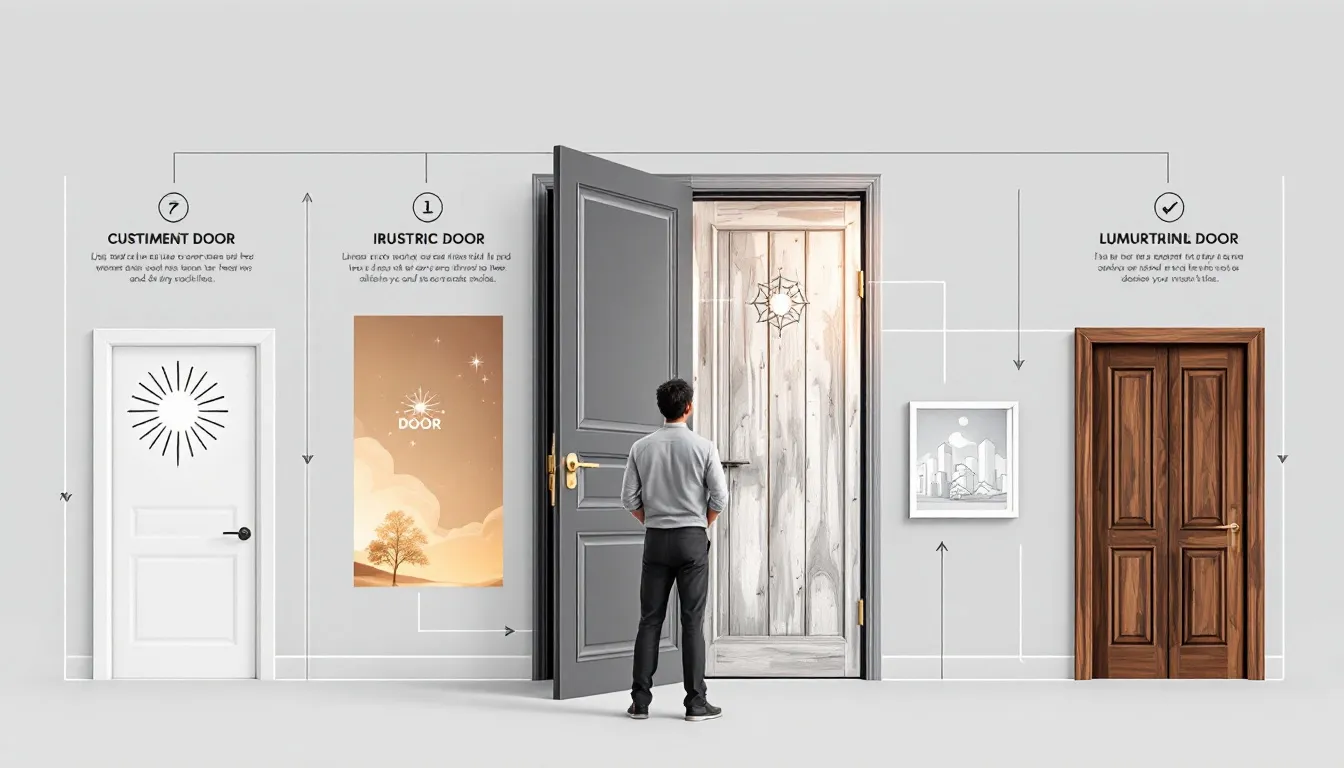
Selecting the right door hinges on multiple aspects such as your aptitude for DIY projects, budget constraints, and the distinct needs of your endeavor. For fresh constructions or remodels that require a new frame, pre-hung doors are advisable because they provide an all-in-one solution that eases the installation process. When selecting doors for your home interior, consider the overall aesthetics and functionality that each type of door can offer.
Conversely, slab doors cater well to one-of-a-kind or highly personalized thresholds. They present more opportunities for tailored design choices while often being a more economical option. When deciding on interior doors, it’s essential to assess the state of any existing door frames and determine whether you necessitate just the door itself or if you’re in need of the complete package with both door and frame included. Identifying details like which way your future door should swing and where its handle will be situated is critical too—this foresight can prevent confusion during setup and guarantee your new feature operates smoothly after installation.
Slab doors provide a significant advantage in terms of customization, offering much more design flexibility than pre-hung or combined prehung and slab door options. They can be tailored to precise measurements and created from an array of materials, such as reclaimed or vintage pieces, allowing for distinctive entrances that make a statement. Whether paneled or flush, slab doors can also be enhanced with various finishes for additional aesthetic value.
Pre-hung exterior doors, while heavier and bulkier, come nearly complete with their own frame, making them easier to install in new constructions and ensuring a weather-tight fit.
On the other hand, while not as customizable, pre-hung doors come as a complete package which facilitates proper alignment along with improved insulation and security aspects. These hung doors are available in diverse materials like MDF (Medium Density Fiberboard), plywood, and solid wood – each presenting its own distinct features. For individuals seeking convenience without extensive custom needs, opting for pre-hung doors is an ideal solution.
It’s vital to keep up with door maintenance for both their durability and function. For Sliding doors, it’s important to routinely examine the weatherstripping and swap it out when you notice wear to preserve the insulation. To avoid your door sagging and promote seamless usage, make a habit of inspecting screws and hinges from time to time.
Additionally, ensure the strike plate is properly installed and maintained, as it is essential for the door to open and close correctly within its frame.
With slab doors offering flat surfaces that hinder dust build-up, upkeep is simpler. A consistent cleaning schedule paired with infrequent refinishing will ensure they retain their fresh appearance. No matter what kind of door you have, sticking to regular maintenance routines is crucial in sustaining their operational efficiency and aesthetic value.
When choosing and installing doors, several common mistakes can be avoided. Homeowners often neglect to evaluate the state of their existing door frame, leading to poor fitting if they choose a slab door without considering that the frame is damaged, especially when opting for an entirely new door frame. Making the right choice is essential to ensure a proper fit.
Accurately measuring the dimensions of the wall where the door will be installed is crucial. The depth of the wall must also be considered to ensure the door frame fits flush with the wall surface.
Ensuring precise measurements and proper alignment during one for one installation can prevent many issues down the line if components are correctly positioned and installed.
Selecting between prehung and slab doors should be based on your individual requirements, financial considerations, and personal capability for do-it-yourself projects. Pre-hung doors come as a comprehensive package with the frame included. They’re especially fitting for brand-new buildings or remodels that necessitate swapping out an old frame. Not only are they known to provide enhanced insulation, but also simplify the installation process despite their heftier price tag and more cumbersome transportation.
In contrast, slab doors present more opportunities for customization in design due to their affordability. This makes them preferable for distinctive or highly bespoke endeavors. Although installing these hung and slab door types demands greater accuracy, it can culminate in a uniquely fitted doorway that elevates both form and function of your space. By grasping these key distinctions along with considering the particular stipulations of your project at hand, you’ll be able to choose wisely—a decision conducive to optimizing both practicality and visual appeal within your environment.
The main difference is that pre-hung doors come with the frame and hardware, which makes the installation process easier, while slab doors are simply the door itself, requiring the frame and hardware to be installed separately.
Slab doors are typically more cost-effective due to their lower material costs, but remember to factor in potential hardware and installation expenses that could increase the overall price.
Therefore, while slab doors may be cheaper upfront, the final cost can vary based on these additional considerations.
Pre-hung doors are the easiest option for DIY projects as they arrive pre-assembled with hinges attached, making installation straightforward and efficient.
Slab doors are suitable for outdoor use as long as they are properly installed and sufficiently weatherproofed to guarantee their best performance.
Both pre-hung and slab doors require regular maintenance to ensure longevity.
Pre-hung doors should have weatherstripping and hinges checked periodically, while slab doors need regular cleaning and occasional refinishing.